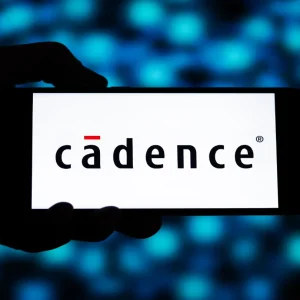It is impossible and impractical to work as quickly as possible to accommodate all business needs at the same speed, with the same priority, let alone balance all the interface requirements of external providers that could comprise your technology ecosystem.
The answer: Multi-speed capabilities that allow CIOs to shift gears at the right time to achieve the best possible outcome, depending on the needs of the business. But some CIOs are more ready than others to manage in this multi-speed IT environment.
CIOs recognise that they need to juggle the maintainenance of reliable legacy systems while also quenching the organisation’s thirst for innovation. That is only part of the picture. Increasingly, CIOs also need to balance a wider range of requirements that reach beyond keeping the lights on to collaborating with peers across the business to help them understand how the latest technology trends can drive new digital innovation and disruptions as they establish new markets and revenue streams.
Of the more than 900 C-level executives Accenture surveyed around the world, 81 percent said the IT organisation has reached a fork in the road. The choice before them is whether they will accelerate the digital agenda or move out of the passing lane to allow others in the organisation to lead. Either way, 88 percent of executives believe the IT organisation needs to broaden its scope and keep pace with evolving needs of the business.
Seventy-one percent of the executive respondents also expressed confidence that they or their IT organisation could operate and simultaneously support multiple business objectives, or "multi-speed IT." However, a large majority (81 percent) of the executives said most IT organisations do not know how to operate effectively while supporting multiple objectives at the same time.
What this points to is the need for CIOs to create an agile, multi-speed operating model to enable their organisations to be competitive. To implement a robust multi-speed IT capability, five key areas focus must be addressed:
Multi-speed operating model.
For most companies, adopting multi-speed IT requires changes to their operating model. To support a digital business, IT must be more elastic and able to innovate quickly with speed-to-market capabilities. CIOs need to be able to easily change speeds while governing a flexible operating model and simultaneously managing risk and pursuing opportunities much as a cross-country bicyclist changes gears in response to changes in the terrain.
Delivery methods are a key lever for multi-speed IT.
Agile and iterative methods can support faster-changing user experiences and digital capabilities, while traditional waterfall methods remain relevant to core systems and legacy applications. DevOps, a software method that emphasises communication, collaboration, integration, automation and cooperation with other IT professionals, is used to enable faster delivery.
Governance.
Multi-speed IT requires a governance model that streamlines prioritisation of business demands. Stepping away from the typical annual planning cycle, prioritisation needs to occur more frequently to stay in step with changes in the business.
According to the Accenture survey, 62 percent of respondents said their IT organisation has different governance models in place to support their companies’ various business operations or initiatives, and more than one-third of the respondents said they adjust their governance models to fit the need. Governance models must aid prioritisation of the right mode of operations in order to deliver value at the right time.
Architecture.
The technology landscape needs to be segmented to support multiple speeds so that it reflects business consumption and the pace of change. By decoupling customer-facing channels from legacy architecture, a business can achieve greater agility and reduce cost pressures.
Moving to an API economy through an application programming interface layer allows organisations to expose core data to faster-moving digital channels and ecosystem partners. As the lines between an organisation and its ecosystem partners blur, access to core data is critical to support innovation.
Organisation.
New skills are required to support the multi-speed agenda. Traditional operations are often siloed with distinct roles. In the multispeed world, teams should be skilled in a range of methods, including iterfall and agile. Staff should understand tools and techniques like DevOps and API Economy.
To find such a diverse mix of skills, new ways for attracting talent are needed. Your future talent pool may include more contractors, as well as newer sources, such as crowdsourcing and talent swaps. Blended roles will emerge, with IT workers requiring technical, business and digital skills along with superior communication and collaboration skills.
Ultimately, CIOs need to shape and manage an IT organisation that can deliver multi-speed IT, using multiple governance models and processes that allow them to prioritise business demand and allocate the right mode of IT operations to meet the needs of the business. As CIOs move in this direction, they play an integral part in making sure the business achieves its objectives.






